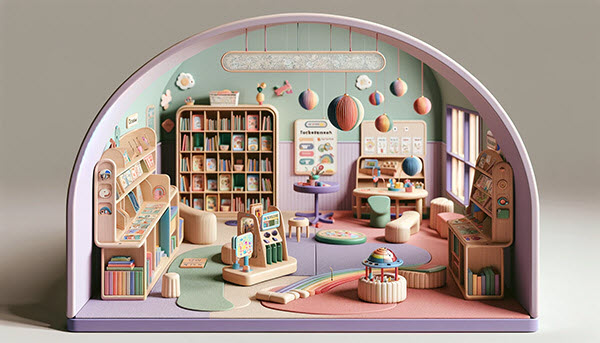Can Struggling Readers Catch Up? Insights on How Struggling Readers Can Catch Up
Today we’re tackling the crucial question: Can struggling readers catch up?
In this article, we offer a deeper understanding of effective strategies and supportive practices designed to help close the reading gap. It offers actionable resources for educators, parents, and students committed to enhancing their reading abilities.
Together, we’ll explore how the right support and dedication can enable struggling readers to make significant progress and achieve reading success.

Change the Status Quo for Struggling Readers
Many educators grapple with the question, “Can struggling readers catch up?”
The solution hinges on our capacity to transform the current learning environment for these students. Struggling readers often encounter substantial challenges, yet with appropriate support and strategies, they can make remarkable strides and fully engage with the world of reading.
Central to tackling this issue is the recognition that these students require an educational setting that fosters both development and confidence in their reading abilities. For more insights, explore our guide on how to help your child excel in reading, which discusses effective support strategies and tools.
Books are invaluable tools in education, yet for students who struggle with reading, they can appear daunting and inaccessible.
It’s crucial, therefore, for educators and stakeholders to reevaluate and adapt their approach to reading instruction to meet the varied needs of their students.
To effectively alter the status quo, schools need to adopt specific strategies tailored to the unique challenges that struggling readers face. This involves choosing books that not only captivate and interest students but also implementing techniques that equip these learners with the skills to conquer their reading difficulties.
We should never underestimate the potential of struggling readers to reach their full potential. By shifting our perspectives and methodologies, we can enable these students not only to catch up but to excel. Teachers are pivotal in this transformative process, serving as mentors who guide struggling readers through their difficulties.
It’s vital for teachers to hold a firm belief in the ability of these readers to improve and to manifest this conviction in their teaching practices and expectations.
Looking forward, we are excited to delve into two promising strategies in our upcoming discussions: “Focus on Speech to Print Methods in Reading Instruction” and “Intensive Reading Interventions: A Pathway for Students to Catch Up.” These approaches provide robust, research-backed solutions to support struggling readers, highlighting the critical importance of solid foundational reading skills and intensive assistance.
Changing the status quo for struggling readers is not only possible, it’s imperative.
As educators and parents, we must dedicate ourselves to implementing the necessary changes that enable all students to unlock the transformative power of reading and significantly enhance their educational experiences.
Focus on Speech to Print Methods in Reading Instruction
In the literacy learning journey, especially for struggling readers, focusing on speech to print methods in reading instruction has proven highly effective. This approach is well-aligned with ELA standards and sets ambitious expectations for each student’s potential to improve and catch up.
By transforming traditional impression methods into more impactful ‘impress’ methods, educators can provide a structured framework that greatly benefits struggling readers.
Professional development for educators is crucial for the successful implementation of these methodologies.
Teachers like Kindel Turner and Bridget Scanlan are at the forefront of refining these strategies, ensuring that each lesson is precisely tailored to address the unique needs of struggling students. These educators are establishing exemplary standards in literacy education by advocating for methods that seamlessly integrate the basic principles of spoken language into written text, thereby improving comprehension and fluency.
A key element of the speech to print method is the implementation of promotion gates, which ensure that students do not progress until they are fully ready, thus strengthening their foundational literacy skills. This method is not limited to reading; it encompasses all aspects of literacy, offering broad support that aids struggling readers in catching up. For parents seeking comprehensive guidance on this topic, our detailed guide on helping children who struggle with reading and writing provides targeted strategies and insights to support literacy development effectively.
With consistent practice and dedication, these students grow in confidence and become better equipped to tackle advanced literacy concepts like lexia.
While the idea of setting high expectations and stringent promotion gates may seem formidable, the benefits are undeniably substantial. By maintaining high standards, educators motivate struggling readers to extend beyond their perceived limits, fostering a growth mindset crucial for sustained academic achievement.
It’s vital for teaching methods to shift from generic lectures to targeted, personalized instruction that accommodates diverse learning styles.
This shift, as highlighted in our earlier discussion “Change the Status Quo for Struggling Readers,” builds a solid foundation for progress.
Looking forward to “Intensive Reading Interventions: A Pathway for Students to Catch Up,” we are offered an optimistic view of what the future holds for struggling readers. By continuously equipping educators with the right tools and tailoring educational strategies to individual needs, we can ensure that struggling readers not only catch up but also thrive in these supportive environments.
Intensive Reading Interventions: A Pathway for Students to Catch Up
In our previous discussion, “Change the Status Quo for Struggling Readers,” we explored transformative strategies such as the speech to print methods in reading instruction.
Building on that groundwork, this section, “Intensive Reading Interventions: A Pathway for Students to Catch Up,” delves into how targeted efforts can help struggling readers not only keep pace but overcome their challenges, ensuring they don’t remain perpetually behind.
Research indicates that students lagging behind after the third grade rarely catch up on their own, but a well-crafted intervention plan can shift this trajectory.
The path to reading proficiency for struggling readers is marked by intensive, personalized learning plans. These plans are thorough, addressing the fundamental aspects of reading acquisition.
It’s essential for these interventions to integrate various components (phonemic awareness, phonics, fluency, vocabulary, and comprehension strategies) to build crucial literacy skills.
Many educators and researchers agree that a combination of components can help struggling readers cultivate crucial literacy skills, shaping a comprehensive road map for success.
Can these students catch up? Undoubtedly, with the proper tools and commitment.
The future for struggling readers can be significantly changed by interventions that are intensive and customized to meet their unique needs. This personalized approach significantly increases the likelihood that these students will catch up in numerous skills, turning potential failure into flourishing success. If you’re wondering about your child’s progress, read our article on when should I be concerned about my child’s reading, which provides valuable information on identifying and addressing reading challenges.
However, it’s not merely about the amount of time spent; the quality of instruction is paramount. Effective reading interventions must include high-quality, evidence-based methods tailored to meet the specific challenges faced by each reader.
This dedication to quality ensures that interventions are not merely procedural but are genuine, effective supports for those struggling with reading fundamentals.
In summary, while the statistics may seem discouraging, through dedicated, intensive interventions, struggling readers have the potential to catch up. They can close the literacy gap, transitioning from struggling to proficient, and by doing so, unlock the myriad opportunities that come with literacy.

Natalie is a full-time blogger and former elementary school teacher who specializes in helping parents teach their kids to read. With a qualification in Early Childhood Education, over 7 years of experience in education, and a passion for literacy, Natalie provides practical tips, activities, and resources for parents looking to support their child’s learning-to-read journey. She is the proud mom of two young readers and loves sharing her knowledge and experience with other parents. Natalie enjoys spending time with her family, reading, and exploring the great outdoors when she’s not blogging.

